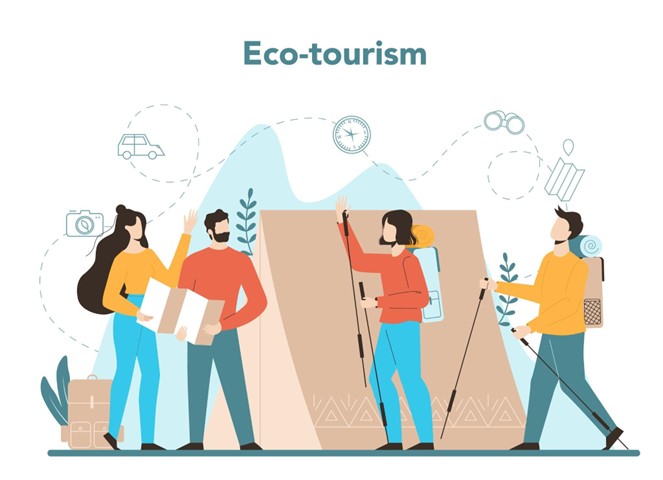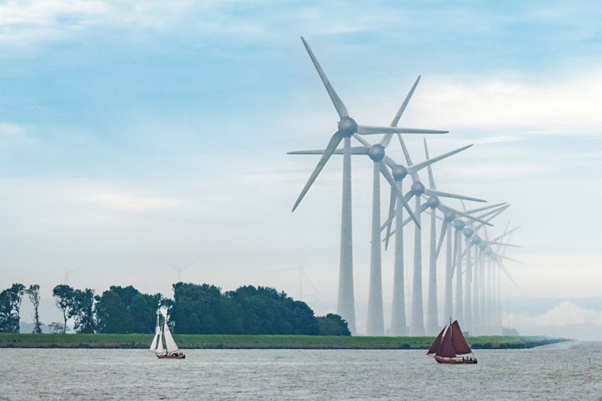Forging a New Path for Sustainability in Higher Education: How Far Should We Go?
Education and engagement is at the heart of all successful climate change initiatives. The concept follows along the same lines of the simple Italian proverb, “teach a person to fish”. By empowering others with knowledge, we enable them to help themselves, help others, and protect our planet from the progressing environmental disaster.
The United Nations programme for schools is an illustrative example of how organisations at the centre of global climate change initiatives perceive the potential benefit of reaching out to young minds.
”The UN is calling for nothing less than a transformation of the global economy in which technology, science, finance and ingenuity are all focused on ensuring a sustainable future for all.”
To achieve such critical goals, the path to environmentally-minded members of society must start as their cognition and mindset develops, the UN argues. Yet, while many institutions are educating children, universities and other places of higher learning are often failing to utilise their potential to influence and motivate millions of people still found within the learning environment.
Aymeric Bricout, a student studying for his Masters in Environmental Technology at Imperial College London, has been awarded the sustainability prize in a national student contest run by CHAS.
Aymeric’s winning entry captured the attention of the judging panel, consisting of Jonquil Hackenberg, Global Head of Sustainability at PA Consulting, and Gareth Rondel, Sustainable Business Lead at CHAS, for its radical approach to systemic change within the higher education sector. His idea takes those same key concepts of empowering change through learning that are so coveted by the United Nations and applies them to higher education. It builds upon one of the core UN Sustainable Development Goals, which is “inclusive and equitable” educational opportunities for all.
The question asked and answered by Aymeric’s essay entry was, at its root, very simple:
What can be done in universities to contribute to a net-zero society?
Teach.
When looking at how far we need to go to bring environmental education into the realms of higher education, he suggests universities not only have a platform available but a responsibility to impart essential climate-change knowledge to a new generation of thought leaders and citizens of the world. Universities should not only be places of learning but also agents for change.
Like the UN, Aymeric argues that “future decision-makers, business leaders, elected officials, voters, parents, civil servants and teachers must all be made aware, informed and trained” on environmental issues. With higher education being a key part of many people’s development, higher education must then be at the forefront of climate change education.
A report published by TheShiftProject identifies that only 11% of higher education courses have mandatory environmental education modules. A further 13% have some varied access to non-essential modules. 76% of all higher education courses possess no educational resources for learning about the climate change disaster at all.
Aymeric’s idea is bold, original but — as highlighted by the United Nations’ own words — entirely necessary. He posits that: “No student should be able to be awarded a higher education diploma without having understood the causes and consequences of climate change and worked, at [their] level, to identify possible solutions.”
This would be, as already suggested, a major and systemic change that offers a transformative purpose for universities. But such a holistic approach to sustainability within higher education cannot happen without monumental shifts in the way climate change education is provided by higher education establishments.
Key to Aymeric’s proposal is how such shifts could be addressed, introduced and realised.
Institutional support would be, without a doubt, vital to the successful deployment of such a large educational reform. While the Paris Agreement commits the UK to a low-carbon model, there have been limited actions taken by the government to educate people on what this means. Aymeric puts forward the idea that The Ministers of State for Universities could support universities by defining a ‘National Higher Education Climate Strategy’. Such a strategy would enable the allocation of resources required to help kickstart this powerful initiative and promise long-term support in terms of implementation and progress monitoring. Institutional involvement will also make the movement systemic and not an initiative to be either adopted or ignored.
But while government action would be instrumental, it is far from the end solution.
A major hindrance to such change within higher education would be the reliance establishments have on performing within the current global university ranking system. At the moment, the ranking system does not use environmental education as part of their ranking criteria, yet that could change. Reform within the current model would help give more weight to such climate change teachings and offer incentives for universities to adopt a new environmental education strategy and introduce genuinely valuable content within their academic circulars. As the situation currently stands, the introduction of climate change education has the potential to draw marks away from other criteria on the global university ranking system. Refining the rules would change attitudes towards the proposal at the top-level of higher education, allowing the climate crisis to become a more central part of the conversations covered at university. Climate change cuts across all aspects of our society and our lives — it should also cut through all aspects of learning, given that it is the single biggest challenge that humankind faces.
So far, all avenues of development look at external factors that influence how universities operate. Before Aymeric explored the internal functions of a university, his proposal offered a further two external influencers that could help to achieve his radical goal:
- Unlike primary and secondary education — which is centred upon generalised skills acquisition, perfect for climate-change modules — higher education is largely influenced by vocational practice and the drive for employment or, at least, furthering education within a specific vocational capacity. Thus, if employers continue to put a lack of emphasis on the desire to hire those with sustainability qualifications and education, universities lack the incentive to offer it to their students. If professional organisations are encouraged to employ these kinds of individuals — prospects that can help them meet their own low-carbon objectives — then higher education will naturally become more geared towards satisfying vocational requirements.
- We find that many academic, civil society and professional organisations already support and contribute to current educational content within universities. These connections can be leveraged to support wider-scale development of environmental education modules and programs. Partnerships between organisations in the environmental sector and higher education institutions present a win-win scenario. Students are offered enhanced climate change educational facilities provided by experts within the sector, including the ability to obtain funding for research, formal academic teachings and access to networking opportunities, and the organisations involved gain access to a pool of new and developing talent that they can use to develop their own initiatives.
Aymeric’s prize-winning entry offers a brief glimpse into how the relationship between higher education and external organisations works in reality. For his winning essay, Aymeric is awarded a £2000 prize that he can use to further his environmental studies. CHAS, as a leading company working in the sustainability accreditation sector, obtains new ways of thinking about how activities in the area can progress. Both judges on the panel agreed this concept changed their way of thinking about how the climate crisis can be approached. For two specialists with years of experience in sustainable working, that kind of insight is not to be taken lightly.
But despite all available avenues of development that exist externally, universities will still face a highly pertinent issue: actually offering this level of environmental education. To accommodate such an educational reform, academic staff would require a great deal of support to provide both coherent messaging and the provision of said messages in a way that is universally accessible across all available higher education courses.
The steps involved in developing such a system would require:
- Early stages of reflection to identify what is relevant and how best to impart the information
- Training of academic staff and the introduction of resources required to provide education.
New paid and voluntary roles would be a valuable addition to universities as part of the reform, facilitated by university administration to help them provide adaptive yet structured approaches to environmental education across the higher education curriculum.
Building the said structure would depend on universities working with government institutions to define a common base of environmental knowledge that all students should know. Assessment of what is defined as valuable and necessary would be based solely on currently available scientific information, focusing on the fundamental climate change issues that can be pursued as part of career development upon leaving higher education.
The ultimate goal of the exercise is to ensure all peoples with higher education qualifications can be assimilated by society in a way that enables them to enact their learnings and help protect the environment through their chosen career paths. This would mean that while the fundamentals of climate change education must be identified, how they are taught, developed and then used by students will be vastly different depending on vocation. Scientific degrees will have a different emphasis on environmental teachings than journalism as an example, although there will be potential for overlap. In this manner, it will be necessary for cross-disciplinary courses to be introduced to provide a wider, more general context that can apply to all individuals in higher education and the particular ways they can use their vocation to support environmental issues.
While this article has been used to breakdown Aymeric’s essay, we find that his conclusion speaks volumes; thus, we’ll close this piece with the words he closed his competition entry with:
“Achieving the UK’s climate commitments requires universities to educate the entire next generation. While primary and secondary schools provide the opportunity to raise awareness among the youngest, higher education allows students to grasp the understanding of climate issues and make the link with their future employment.
Despite growing interests from young people, universities are currently not providing all students with a basic level of understanding of climate issues. Under the umbrella of a National Higher Education Climate Strategy, universities can fill the climate education gap by reforming university rankings, harnessing industry-leading expertise, supporting academic staff in the teaching of climate issues, and providing interdisciplinarity climate education.”
The systemic change outlined by Aymeric Bricout is as radical as it is necessary. We live in an age of mass extinction owed in no small part to climate change. Global temperatures are rising rapidly and commercial industries continue to take from the planet without thought of repercussions. If the future of the climate crisis lies in the hands of a new generation of thought leaders, then equipping every single person possible with the knowledge required to be a force for change is a developmentally complex but ultimately powerful solution.



















